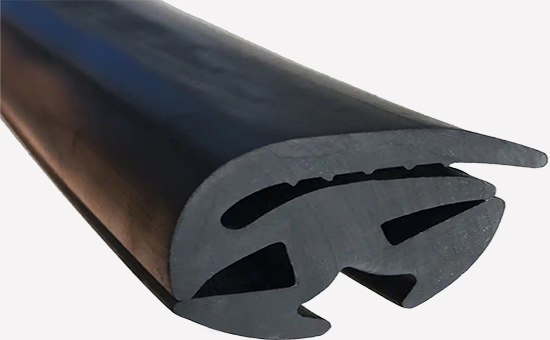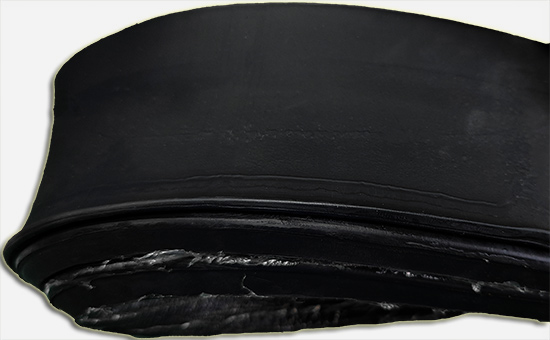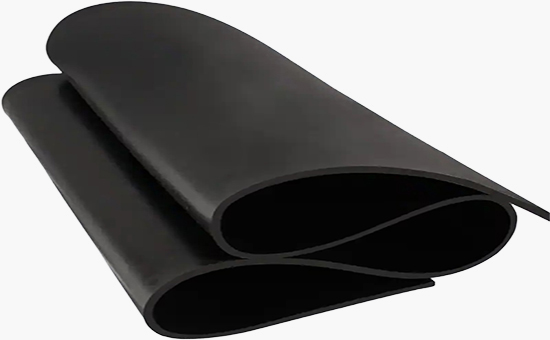The cold resistance of rubber refers to its ability to maintain its original elasticity and flexibility without becoming brittle or breaking under low-temperature conditions, thereby functioning normally. Ethylene-propylene-diene monomer (EPDM) rubber is a non-polar rubber with excellent compliance, a low glass transition temperature, and very good low-temperature performance, making it suitable for producing various rubber products used under low-temperature conditions. Recycled EPDM retains the basic performance characteristics of EPDM rubber and can replace virgin EPDM in the production of low-temperature resistant rubber products, thereby reducing production costs.
When producing rubber products that require high low-temperature performance using recycled EPDM, it is necessary to reasonably design the rubber product formulation.
1. Used together with ternary ethylene-propylene rubber with an ethylene content of 40%-60%
The ethylene content in EPDM (ethylene propylene diene monomer) rubber affects the low-temperature performance of the compound. When the ethylene content in EPDM is among 40% and 60%, it has the lowest glass transition temperature, and the resulting compound exhibits the best low-temperature performance. When producing low-temperature-resistant rubber products using EPDM recycled rubber as the main raw material, it is recommended to blend it in appropriate proportions with EPDM rubber with an ethylene content below 60%. For compression-molded EPDM recycled rubber products, it is recommended to add an appropriate amount of EPDM rubber with an ethylene content below 50%.

2. Key Points in the Design of Vulcanization System for Low-Temperature-Resistant EPDM Recycled Products
In the production of regenerated EPDM rubber products, the type of vulcanization crosslinks and the density of crosslinks affect the low-temperature performance of the rubber. In terms of crosslink type, peroxide-vulcanized rubber exhibits good elasticity, allowing macromolecules to respond more quickly to external forces, and its low-temperature performance is better than that of sulfur-vulcanized rubber. In terms of crosslink density, moderate crosslinking reduces the regularity of molecular chains, which can improve the low-temperature performance of vulcanized EPDM regenerated rubber; excessive crosslinking increases the modulus, restricts molecular mobility, and adversely affects the low-temperature performance of the rubber.
3. Key Points in Designing Reinforcement and Filling Systems for Low-Temperature-Resistant EPDM Recycled Rubber Products

When using EPDM reclaimed rubber to produce rubber products with high requirements for low-temperature performance, it is recommended to choose low-reinforcing or medium-reinforcing carbon black. The vulcanized rubber of EPDM reclaimed rubber has good elasticity and dynamic performance, such as with spray carbon black.
4. Key Points in Designing a Softening System for Low-Temperature Resistant EPDM Recycled Rubber Products
Softeners have a lubricating effect on macromolecules, which can enhance the mobility of macromolecules and thereby improve the low-temperature performance of rubber compounds. To improve the cold resistance of recycled EPDM rubber products, a softener E5LYY516 with a low freezing point, strong plasticizing effect, and good compatibility can be used in the rubber compound; the greater the amount used, the more significant the effect. Commonly used softeners that can improve the low-temperature performance of recycled EPDM rubber products include synthetic ester plasticizers (such as DOS, DBS, DOA, DBP, DOP, etc.) and medium-viscosity or medium-low-viscosity naphthenic oils or paraffin oils.

It should be noted that although synthetic ester plasticizers can significantly improve the low-temperature performance of recycled EPDM rubber compounds, attention must be paid to compatibility issues caused by polarity differences, and their dosage must be strictly controlled; among the rubber oils that are compatible with EPDM rubber, it is recommended to choose naphthenic oils with better low-temperature performance.
In actual production, the hardness of EPDM recycled rubber compounds also affects low-temperature performance. Generally, low-hardness rubber has better cold resistance than high-hardness compounds with similar formulations. When using EPDM recycled rubber to produce rubber products that require high low-temperature performance, it is essential to comprehensively consider the mechanical performance requirements of the rubber products, the properties of the recycled rubber, and cost budget, in order to reasonably design the rubber product formulation.
Exclusive original article [commercial authorization] reprint, excerpt and excerpt in any form are prohibited without written authorization. Focus on Hongyun rubber: learn the process formula and raw material technology of producing rubber products from recycled rubber to help you reduce costs and increase profits